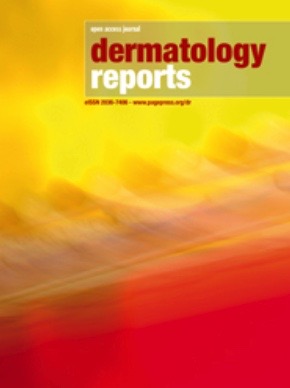Report on a Novel Treatment for Post-Traumatic Stress Disorder and its Implications for Sustainable Development Goals
This report analyzes a developing therapeutic intervention for Post-Traumatic Stress Disorder (PTSD), known as Reconsolidation of Traumatic Memories (RTM). It assesses the treatment’s methodology, current scientific standing, and its potential contributions to achieving key United Nations Sustainable Development Goals (SDGs), particularly SDG 3 (Good Health and Well-being) and SDG 16 (Peace, Justice and Strong Institutions).
The Public Health Challenge of PTSD: A Barrier to SDG 3
Post-Traumatic Stress Disorder represents a significant challenge to mental health and well-being, directly impacting the targets of SDG 3. The condition’s prevalence is particularly high among populations exposed to conflict.
- Approximately 7% of military veterans experience PTSD.
- This figure increases to nearly 30% for veterans who have served in a war zone.
Conventional treatment methods, while established, present considerable obstacles to patient recovery and well-being.
- The standard treatment, Prolonged Exposure (PE) therapy, requires patients to repeatedly revisit their trauma until the emotional response is diminished.
- The process is often so distressing that over 50% of veterans do not complete the full course of treatment, undermining progress toward SDG Target 3.4, which aims to promote mental health and well-being.
Reconsolidation of Traumatic Memories (RTM): An Innovative Approach
RTM is a controversial therapeutic protocol that aims to treat PTSD without inducing the distress associated with conventional methods. Its methodology is based on the neuroscientific theory of memory reconsolidation, which posits that memories can be altered upon recall.
The RTM Protocol
The treatment involves a structured, multi-stage process designed to dissociate the patient from the traumatic memory’s emotional impact:
- The patient is instructed to visualize the traumatic event as a film playing in a movie theater.
- The patient then imagines floating out of their body and into the projection booth, watching their seated self watch the film. This creates multiple layers of dissociation.
- If the patient shows any sign of discomfort, the process is paused. The patient is then guided to alter the “film” (e.g., making it black and white, turning characters into stick figures) until it can be viewed without an emotional response.
- Once the memory is neutralized, the patient visualizes stepping into the film itself.
- In the final stage, the patient is asked to reimagine a completely different, non-traumatic ending to the event.
Scientific Evaluation and the Role of Partnerships (SDG 17)
The efficacy and acceptance of RTM face significant hurdles, highlighting the need for robust scientific validation through collaborative efforts, a core principle of SDG 17 (Partnerships for the Goals).
Current Research Status
- Four published clinical trials on RTM exist; however, their credibility is questioned as they were all conducted by the treatment’s creator.
- The broader scientific community remains skeptical due to a lack of rigorous, independent data and a philosophical resistance to the concept of treating trauma without direct confrontation of fear.
Future Research and Institutional Collaboration
- A large-scale, comparative clinical trial is underway, led by U.S. Army scientist Michael Roy. This study compares RTM directly with the gold-standard Prolonged Exposure therapy.
- This collaboration between military and scientific institutions exemplifies the partnerships necessary under SDG 17 to advance global health solutions.
- Preliminary findings from this trial suggest that RTM may be as effective as the current standard of care.
Conclusion: Advancing SDG 3 and SDG 16 through Mental Health Innovation
The exploration of treatments like RTM is critical for advancing global development objectives. A successful, less distressing treatment for PTSD would have profound implications.
- SDG 3 (Good Health and Well-being): By offering a potentially painless and more tolerable alternative, RTM could drastically increase treatment completion rates, leading to improved mental health outcomes for millions affected by trauma.
- SDG 16 (Peace, Justice and Strong Institutions): Effectively treating the psychological wounds of conflict is essential for promoting peaceful and inclusive societies. Assisting in the recovery of veterans and other trauma survivors supports their reintegration into society and contributes to long-term social stability.
While skepticism remains, the potential of RTM to alleviate suffering and contribute to a healthier, more peaceful world necessitates continued rigorous and independent scientific investigation.
1. Which SDGs are addressed or connected to the issues highlighted in the article?
- SDG 3: Good Health and Well-being
- SDG 16: Peace, Justice and Strong Institutions
2. What specific targets under those SDGs can be identified based on the article’s content?
3. Are there any indicators mentioned or implied in the article that can be used to measure progress towards the identified targets?
SDG 3: Good Health and Well-being
-
Target 3.4: By 2030, reduce by one third premature mortality from non-communicable diseases through prevention and treatment and promote mental health and well-being.
- Explanation: The article’s entire focus is on treating Post-Traumatic Stress Disorder (PTSD), a significant mental health condition, to improve the well-being of affected individuals, specifically veterans. It directly addresses the issue of premature mortality by highlighting “the staggering rate of suicides among veterans with PTSD,” which new treatments aim to mitigate.
- Indicator 3.4.2 (Suicide mortality rate): The article explicitly references the high suicide rate among veterans with PTSD, making this a key indicator for measuring the severity of the problem and the potential success of more effective treatments like RTM.
-
Target 3.8: Achieve universal health coverage, including access to quality essential health-care services.
- Explanation: The article discusses a major barrier to quality healthcare for PTSD: the standard treatment is so “harrowing that over half of veterans are unable to complete the full course.” The search for a “virtually painless” and more effective alternative like RTM is a direct effort to improve access to quality and appropriate mental health services for this population.
- Indicator 3.8.1 (Coverage of essential health services): The article implies a gap in effective service coverage by providing statistics on the prevalence of PTSD (“About 7% of veterans… closer to 30% for those who have served in a war zone”) and noting the high dropout rate for existing therapies. The success of a new treatment would directly improve the effective coverage of this essential health service.
SDG 16: Peace, Justice and Strong Institutions
-
Target 16.1: Significantly reduce all forms of violence and related death rates everywhere.
- Explanation: The article frames PTSD as a direct consequence of violence experienced by soldiers in conflict (“served in a war zone,” “the mess hall blows up”). Treating the psychological trauma of survivors is a crucial part of addressing the long-term impacts of violence. The high suicide rate among veterans with PTSD can be considered a “related death rate” stemming from conflict.
- Implied Indicator (Prevalence of PTSD in post-conflict populations): The article provides statistics on the prevalence of PTSD among veterans (7% to 30%). This rate serves as an implied indicator measuring the lasting health consequences of violence and conflict on a population. The suicide rate (Indicator 3.4.2) also functions as a measure of “related death rates” in this context.
4. Table of SDGs, Targets, and Indicators
| SDGs | Targets | Indicators |
|---|---|---|
| SDG 3: Good Health and Well-being | Target 3.4: Promote mental health and well-being and reduce premature mortality from non-communicable diseases. | Indicator 3.4.2 (Suicide mortality rate): Directly referenced in the article as “the staggering rate of suicides among veterans with PTSD.” |
| Target 3.8: Achieve universal health coverage, including access to quality essential health-care services. | Indicator 3.8.1 (Coverage of essential health services): Implied by the high prevalence of PTSD (“7% of veterans… closer to 30%”) and the high dropout rate for current treatments (“over half of veterans are unable to complete”), which indicates a gap in effective service coverage. | |
| SDG 16: Peace, Justice and Strong Institutions | Target 16.1: Significantly reduce all forms of violence and related death rates everywhere. | Implied Indicator (Prevalence of PTSD in post-conflict populations): The article provides statistics (7% to 30% of veterans) that measure the long-term health impact of violence. The suicide rate (Indicator 3.4.2) also serves as a measure of “related death rates.” |
Source: sciencefriday.com







